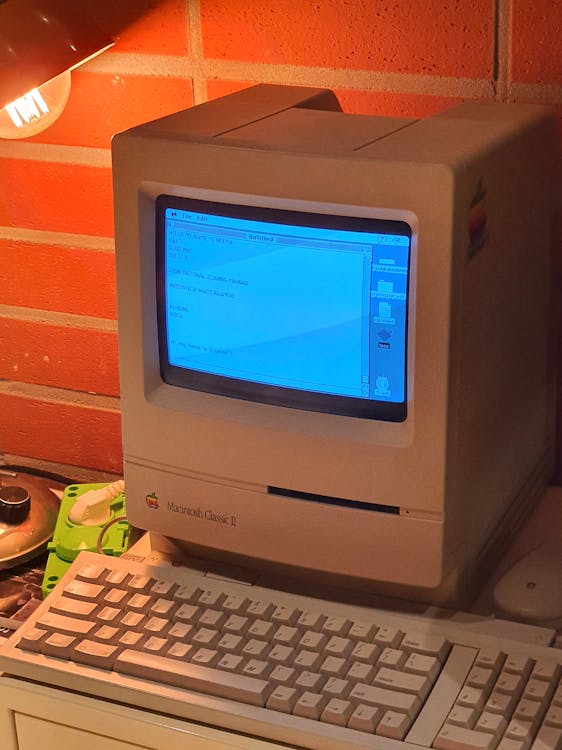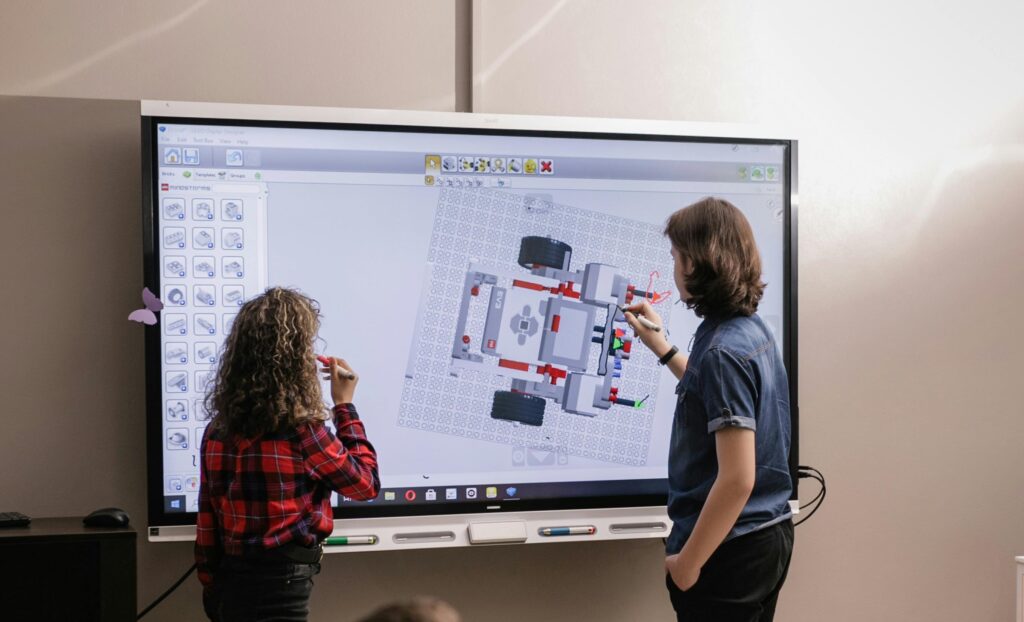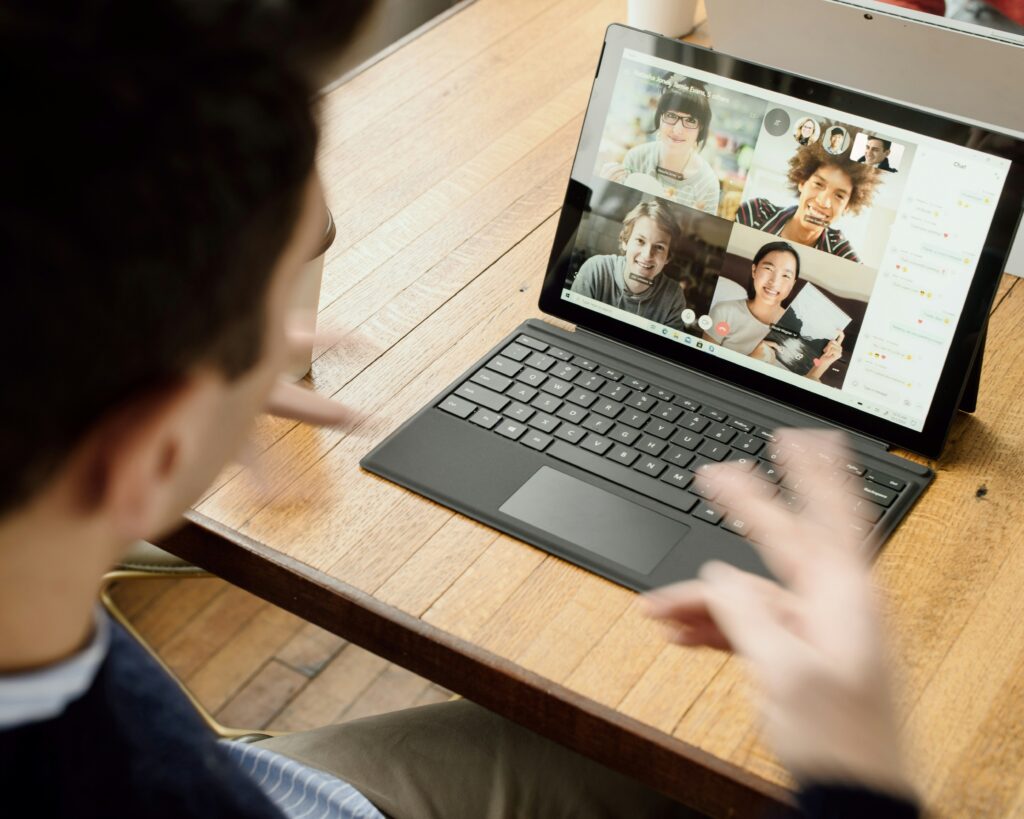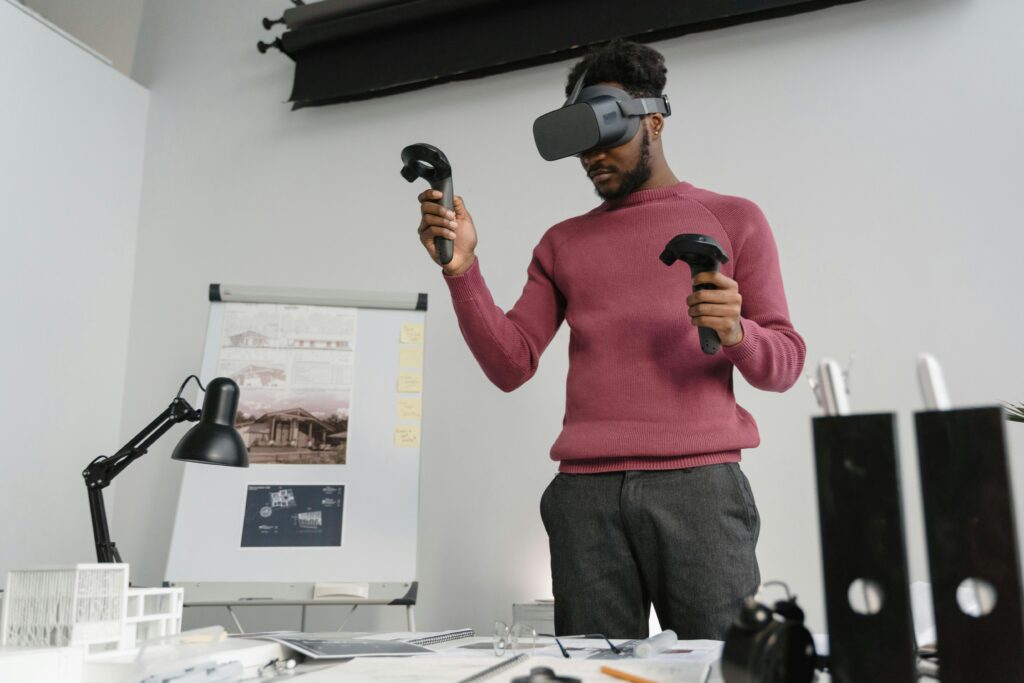In the ever-changing landscape of education, technology has become a driving force, transforming how knowledge is shared, consumed, and applied. From the humble beginnings of the chalkboard to the immersive experience of virtual classrooms, the journey of tech in education is a testament to innovation and adaptation. This post traces the evolution of educational technology, highlighting key milestones, examining its impact on learning, and exploring what the future holds.
The Chalkboard Era: Laying the Foundation
Before the digital age, chalkboards were the centrepiece of classrooms for over two centuries. Introduced in the early 1800s, chalkboards represented one of the first major technologies to significantly enhance education. Teachers could present lessons visually to an entire class, revolutionising how information was delivered and shared.
Though basic by today’s standards, the chalkboard enabled interactive learning in a way that had not been possible before. Students could see, process, and engage with material, while teachers had the ability to revise or elaborate in real-time, enhancing understanding. This simple yet effective tool became a symbol of learning that persisted well into the 20th century.

Photo Credit: Monstera Production
The Rise of Personal Computers: A New Frontier
The late 20th century saw a dramatic shift with the introduction of personal computers (PCs) into the classroom. In the 1980s and 1990s, as PCs became more affordable, they were integrated into schools to support learning in subjects like math, science, and writing. The ability to simulate experiments, process large amounts of data, and provide interactive learning software set the stage for the digital revolution in education.
For the first time, students were not just passive consumers of information – they could actively engage with it. Programs like educational games and early word processors began to lay the groundwork for more sophisticated digital learning tools.

Photo Credit: Changhee Kim
The Internet: Connecting Classrooms to the World
The most significant shift in tech integration came with the rise of the internet in the late 1990s & early 2000s. This new connectivity opened the door to a wealth of information previously unimaginable. Classrooms were no longer confined to textbooks; the internet offered vast databases, multimedia resources, and collaborative opportunities with other schools globally.
The rise of online research, email communication, and the development of e-learning platforms began to reshape education at its core. Websites like Khan Academy, launched in 2008, demonstrated the potential of online learning to offer high-quality instruction on a massive scale.
Interactive Whiteboards: Engaging the Digital Generation
In the early 2000s, interactive whiteboards started appearing in classrooms, replacing traditional chalkboards. These digital surfaces allowed teachers to present multimedia lessons with the swipe of a finger, combining the visual and interactive benefits of technology. Teachers could integrate videos, images, and web resources directly into their lessons, increasing engagement and making learning more dynamic.
Interactive whiteboards encouraged participation and collaborative learning, giving students the ability to engage with the material in ways that traditional methods couldn’t match. This technology also bridged the gap between physical and digital learning environments, creating a hybrid model of education.

Photo Credit: Alena Darmel
Tablets and Mobile Learning Technology in Education
With the launch of the iPad in 2010, tablets and mobile devices began to make their way into the classroom. These portable technologies gave students access to personalised learning tools, educational apps, and online resources wherever they were. Tablets brought learning outside the confines of the classroom and allowed for a more flexible, digital learning experience.
Students could now take virtual field trips, create multimedia projects, or collaborate with peers on cloud-based platforms, all through a single device. This era also saw a surge in adaptive learning technologies, which tailor educational content to individual student needs, fostering more personalised instruction.

Photo Credit: RDNE Stock project
Virtual Classrooms & Remote Learning: Digital Learning Without Borders
The onset of the COVID-19 pandemic in 2020 accelerated the adoption of virtual classrooms. With schools forced to close, educators quickly pivoted to platforms like Zoom, Google Classroom & Microsoft Teams to continue teaching remotely. This shift not only underscored the importance of technology in education but also highlighted the potential for digital learning platforms to offer flexible, accessible education on a global scale.
Virtual classrooms have enabled students to learn from anywhere in the world, connecting with teachers and peers in real-time while accessing recorded lessons, assignments, and resources at their own pace. The adoption of learning management systems has also streamlined educational workflows, creating centralised hubs where students can manage their activities.

Photo Credit: Surface
Virtual and Augmented Reality Tech Integration in Education
In recent years, virtual reality (VR) and augmented reality (AR) have begun to make their mark in education. VR allows students to step inside a 3D environment, offering immersive experiences like visiting historical sites or conducting virtual science experiments. AR, overlays digital information onto the real world, bringing subjects like anatomy or architecture to life with interactive, 3D models.
These technologies transform abstract concepts into tangible experiences, allowing students to engage with content in a highly visual & interactive way. As VR & AR become more affordable, they will likely play an increasingly significant role in creating engaging, hands-on learning experiences.

Photo Credit: Tima Miroshnichenko
The Future: AI and Personalised Digital Learning
Looking ahead, the future of educational technology is expected to be driven by artificial intelligence and AI-driven personalised learning systems. AI has the potential to revolutionise education by offering tailored content based on student’s unique learning styles, strengths, and weaknesses. These systems can analyse student performance and provide customised learning paths, optimising both the pace and method of instruction.
Additionally, AI-powered tools can automate administrative tasks like grading, freeing up teachers to focus on more meaningful aspects of teaching. As machine learning continues to advance, we can expect to see more adaptive learning systems, intelligent tutoring, and data-driven insights guiding student success.
Technology in Education: Shaping the Future
From chalkboards to virtual classrooms, the evolution of educational technology has been a journey of continuous improvement. As we look to the future, it’s clear that technology will remain at the forefront of shaping the educational landscape. Learning will become more personalised, accessible, and immersive than ever before, creating opportunities for students and educators alike to thrive in a digitally connected world. The evolution of technology in education is far from over – its next chapter is just beginning.


